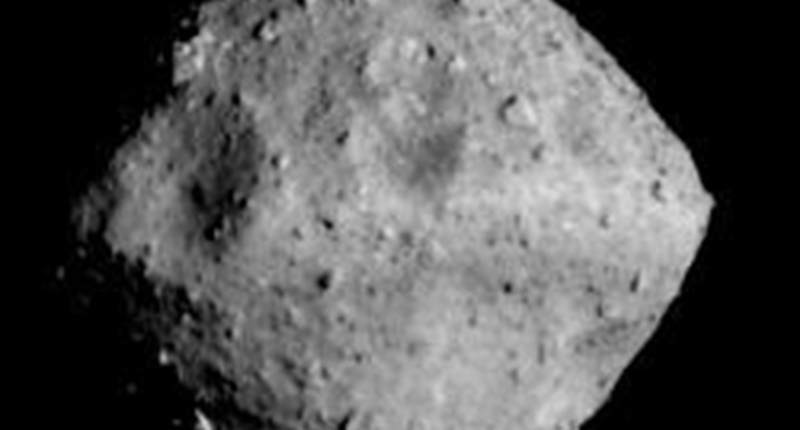Samples from the Ryugu asteroid collected by Japan’s Hayabusa2 spacecraft have revealed the presence of RNA building blocks and other organic compounds. The Ryugu asteroid is a carbonaceous asteroid located between Mars and Jupiter. Researchers found uracil, a building block of RNA, as well as nicotinic acid, in the samples. These findings support evidence that components for life are formed in outer space and transported to Earth via meteorites. The team used hot water to extract the biological molecules, which were then analyzed. Additional organic compounds containing nitrogen, as well as amino acids, amines, and carboxylic acids found in proteins and metabolism, were also discovered. This discovery can help to strengthen current theories about the origins of life on Earth and other planets.
RNA Building Blocks and Organic Compounds Found in Ryugu Asteroid Samples
Samples taken from the Ryugu asteroid by the Japanese space agency’s Hayabusa2 spacecraft have revealed the presence of RNA building blocks and other organic compounds. Ryugu is a carbonaceous asteroid located in the asteroid belt between Mars and Jupiter. The samples returned to Earth in December 2020 were analyzed by an international team of researchers led by Associate Professor Yasuhiro Oba at Hokkaido University. They found uracil, one of the building blocks of RNA, the molecules that carry instructions for the development and function of living organisms.
The team also found nicotinic acid, also known as Vitamin B3 or niacin, in the Ryugu samples. This discovery, published in the journal Nature Communications, supports the evidence that essential components for the emergence of life are formed in outer space and transported to our planet via meteorites.
Researchers used hot water to extract biological molecules from the Ryugu particles. The extracted compounds were subjected to liquid chromatography coupled with high-resolution mass spectrometry for further analysis. The presence of uracil and nicotinic acid was identified, along with other organic compounds containing nitrogen. The samples also contained other biological molecules, such as amino acids, amines, and carboxylic acids found in proteins and metabolism, respectively.
The compounds detected are similar but not identical to those previously discovered in carbon-rich meteorites. The discovery of uracil in the Ryugu samples strengthens current theories on the source of nucleobases in the early Earth. A comparative study of the composition of asteroids, such as the samples that NASA’s OSIRIS-REx mission will bring back from asteroid Bennu this year, will provide further data to build on these theories, according to Oba.
NASA’s OSIRIS-REx spacecraft is expected to deliver samples collected from asteroid Bennu on September 24, 2023. The results of studying the Ryugu and Bennu samples can provide insight into the origins of life on Earth and other planets.
Don’t miss interesting posts on Famousbio










